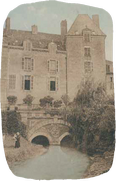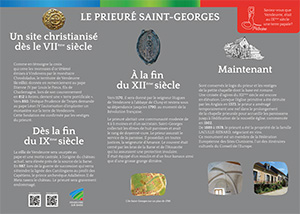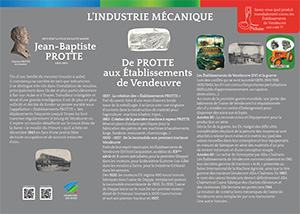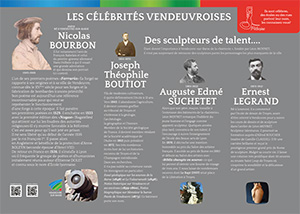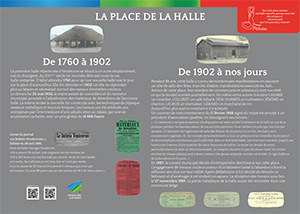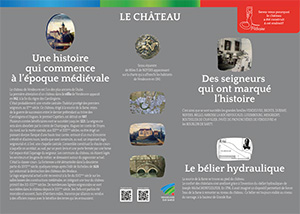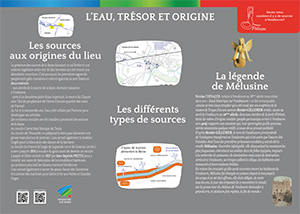Voici les différents panneaux du circuit patrimonial Mélusine :
Prieuré Saint-Georges
The Saint-Georges Priory
Did you know that Vendeuvre was a papal territory in the ninth century?
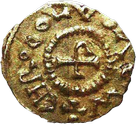
A Christianised site since the seventh century
The cross adorning the gold coins (triens) issued in Vindovera by Chrodoladus, a money maker, confirms that the territory of Vendeuvre (la villa), conferred to Pope Stephen IV by Louis the pious, son of Charlemagne, at his coronation in 812 in Rheims, became a ‘pontifical land’.
Around 850, Bishop Prudence of Troyes sought permission from Pope Leo IV to establish a monastery on the land of Vendeuvre. The remains of the priory corroborate the existence of this structure.
From the late ninth century
The villa de Vendeuvre was stolen from the pope and a castle mound, at the origin of the existing château, was built near the Barse source.
In 987, Prince-Archbishop Adalberon II of Metz destroyed the château during the succession war that saw the Carolingian lineage disappear in favour of the Capetians. The priory was considerably damaged.
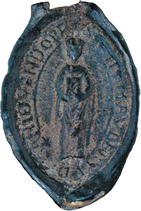
In the late 12th century
Circa 1170, Lord Hugues de Vendeuvre donated the priory to the Abbey of Cluny under the authority of which it remained until 1790, around the time of the French Revolution.
The priory housed a modest community of four to five monks and a sacristan. Saint-Georges collected the tithes of eight parishes and had the rank of a deanery cure. The Prior performed the service of the parish and owned the seigneury of Amance in all respects. The convent was surrounded by the streams of the Barse and the Houzotte, which provided insular protection.
It was also equipped with a mill and a communal oven as well as a large tithe barn.
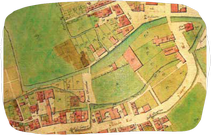
Saint-Georges Isle on a map dated 1785
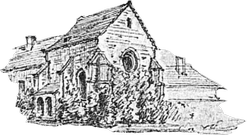
Present day
The Prior’s dwelling and the remains of the small chapel featuring a Romanesque base have been preserved and stunning 12th-century cross-arches are still standing. When the early church was destroyed by the British in 1373, the Prior installed a temporary nave in the extension of the priory chapel to accommodate parishioners until the completion of the new church started in 1502.
From 1889 to 1978, the priory was the property of a wine merchant family called LACULLE-RENARD.
This monument is part of the European Federation of Cluniac Sites, one of the Cultural Routes of the European Council.
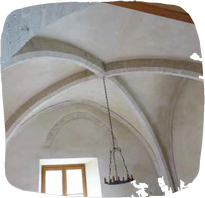
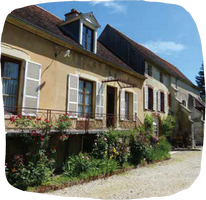
Voici les différents panneaux du circuit patrimonial Mélusine :
Industrie Mécanique
The Engineering Industry
Do you know which world-famous product the Établissements de Vendeuvre developed?
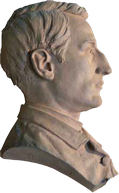
Charles PROTTE
successor
BORN IN PONT LA VILLE IN HAUTE-MARNE
Jean-Baptiste PROTTE
(1815-1893)
The son of a family of paddle mill workers, he started his career as a mechanic.
He soon made a name for himself installing mills, mainly in the Aube region and especially in Bar-sur-Aube and Troyes.
A relentless worker exhibiting great wisdom, he received an increasing number of requests and opted to set up his own company under the name ‘Établissements PROTTE’. His frequent trips to Troyes led him to travel through Vendeuvre regularly. There he spotted an abandoned mill on the Barse River, ‘Le Moulin du Prieuré’ (the Priory mill), which he acquired in December 1843. The mill was located opposite an unoccupied meadow, which was, furthermore, surrounded by water.
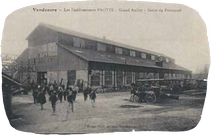
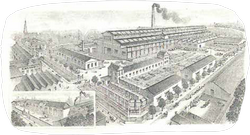
From PROTTE to Établissements de Vendeuvre
1837: Foundation of the ‘Établissements PROTTE’
Thanks to the expertise of some twenty local metalworkers, he began manufacturing agricultural equipment: threshing machines, etc.
1863: Launch of the first PROTTE steam engine
He introduced dedicated workshops for the manufacture of machine parts (boiler making, forging, foundry, carpentry, etc.)
1900 - 1937: From the traction engine to the first Vendeuvre tractors
Backed by their visionary spirit, the Établissements de Vendeuvre (EV) acquired three factories specialised in engines in the early 20th century. The first (in Dieppe) operated in engines, the second (in Lomme-Lez-Lille) in flour mills, and the third (in Orléans) in seeders.
As early as 1920, the 400 rpm EV engines manufactured in the Dieppe factory replaced the bulky 1900 traction engines everywhere.
The Dieppe plant released its first 9-horsepower diesel engine running at 1000 rpm in 1930, and introduced its first tractor in 1937.
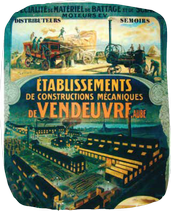
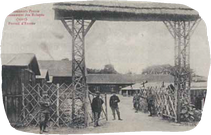

The Établissement de Vendeuvre (EV) and the war
During the successive conflicts (1870, 1914-1918, 1939-1945), EV experienced major disruptions (supply issues, enemy occupation, and destruction).
During the First World War, parts of the Vendeuvre factory buildings were commandeered to house a shelter to care for the wounded.
The 1950s: Reconstruction and outfitting for mass production.
Despite significant challenges resulting from the shortage of resources following the end of the war, EV undertook to restore the ruins and establish factories, new in both style and equipment, capable of mass-producing low-cost and flexibly designed equipment.
The 1960s: Takeover of the company by Allis-Chalmers.
In 1961, the Établissements de Vendeuvre marketed their last range of tractors, ‘the BL’, presented at the International Agricultural Machinery Exhibition, as well as the first range of Vendeuvre-Allis-Chalmers tractors. In 1967, the company changed its name to Allis Chalmers, and the factory manufactured forklift trucks and graders.
The plant closed around 1984 and the mechanical engineering vocation of the Vendeuvre factory was replaced by a joinery.
That’s another story…
Voici les différents panneaux du circuit patrimonial Mélusine :
Célébrités Vendeuvroises
The Renowned Figures of Vendeuvre
Do you know the famous people who conferred their names to some of our schools and streets?
POET BORN IN VENDEUVRE-SUR-BARSE
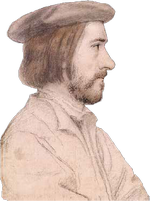
(1503–1550)
Nicolas BOURBON
His circle included François Rabelais and Hans Holbein, a painter and engraver whom he held in high regard and who sketched his portrait (see figure).
One of his earliest poems, ‘Ferraria’ (La forge), alludes to his origins and hometown, Vendeuvre, recognised for its forges and the manufacture of bombards (early cannons) since the 15th century. Today, his poem is an essential reference for those seeking to envision how a forge operated at that time.
He published his first poems in 1529, followed by the first edition of ‘Nugea’ (Bagatelles) in 1533, enticing the wrath of the religious authorities for portraying himself as favourable to the reformation.
This sufficed for him to be thrown into prison. He was not freed until early 1535 by King Francis I of France. Following his release, he journeyed to England and received the protection of Anne BOLEYN (second wife of Henry VIII).
Upon his return to France in 1536, he settled in Lyon where he socialised with a group of poets and humanists initially gathered around Etienne DOLET called the École lyonnaise.
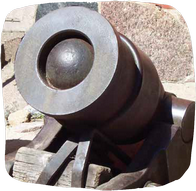
Talented sculptors...
Considering the importance of the ‘Sainterie’ established by Léon MOYNET in Vendeuvre-sur-Barse, it is hardly surprising to find sculptors among the most prominent people of the town.
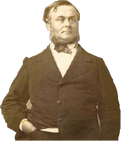
(1816–1875)
Joseph Théophile BOUTIOT
The son of modest farmers, he left school at the age of 12. Around 1840, leaving agriculture behind, he became a clerk at the city of Troyes Court. He took a great interest in geology, archaeology, geography, and history.
A member of the French National Geological Society, he was also a resident member of the Aube region Academic Society in 1852 and was appointed as president in 1872. His countless writings establish him as a renowned historian of Troyes and the southern Champagne region.
He did not overlook his native town in his research. This is displayed, in particular, in the following works: Geological essay on the Barse sources (1848), Le Valsurzeneth (1848), Historical information on Vendeuvre and its vicinity (1859–1860), and Biographical information on the Baron Pavée de Vendeuvre (1873).
Today, a nursery school bears his name in Vendeuvre.
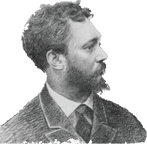
(1854–1932)
Auguste Edmé SUCHETET
While his father, a builder, was working on the extension of the ‘Sainterie’ buildings, Léon MOYNET noticed the gifted young man and hired him as an apprentice sculptor. A few years later, convinced of his talent, he encouraged him to attend the Lyon School of Fine Arts.
In 1878, he received an honourable distinction at the Salon of French artists. He was awarded the Rome Prize in 1880 and made his debut at the Salon of Artists with ‘Biblis changée en source’ (a representation of Byblis), resulting in a three-year travel scholarship. He leaves us numerous works of art, including Le Rapt (1907) located on Place de la Libération in Troyes.
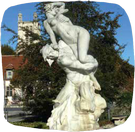
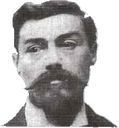
(1872–1912)
Ernest LEGRAND
Born in Lesmont, he attended the Troyes Design School, before being oriented to study design and sculpture in the Léon MOYNET workshop in Vendeuvre.
A talented sculptor, he pursued his education with Alfred BOUCHER (Camille CLAUDEL’s mentor). He had a distinguished career and was awarded the prestigious first prize from the Grand Prix de Rome for sculpture. Despite his short life, he produced an extremely prolific collection, including 10 pieces expressing the sensitivity and delicacy of a great artist, displayed in the Saint-Loup Museum in Troyes.
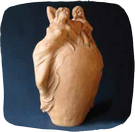
Voici les différents panneaux du circuit patrimonial Mélusine :
Place de la Halle
The Place de la Halle
There was once a covered market hall in Vendeuvre, can you name some of the craftsmen and traders who worked there?
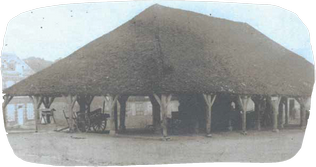
From 1760 to 1902
The first known covered hall in Vendeuvre was located Rue du Bourgetet. A fire destroyed the entire street, including the hall during the 16th century. It was not until 1760 that a new covered hall was built only to be demolished in 1902 as it no longer met demands and mainly required extremely costly maintenance work.
On Sunday 25 May 1902, the mayor, assisted by councillors and the Municipal Treasurer, proceeded with the adjudication of the materials for the demolition of the old covered hall. That same year, a new structure was erected combining a metal frame and brick walls in accordance with the techniques of the time
The work was conferred to contractors through a sealed bidding process with an overall price of 15,598 French francs.

Extract from the ‘Le Bulletin Vendeuvrois’ newspaper.
Issue dated 28 April 1895.
Fair of Saint-Georges, Vendeuvre.
‘We came with 95 cows, about twenty were sold for 300 to 450 francs. The market was rather quiet: only the farmers sold, the growers held up and did not sell.
There was a drop of 40 francs. We brought 6 horses which were not sold. There were 88 pigs which were sold between 38 to 50 francs a piece.’
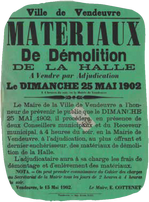
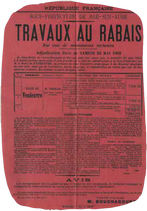
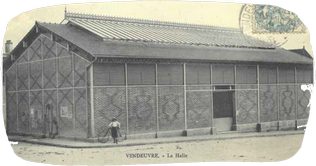
From 1902 to the present day
This covered hall has hosted numerous events for the past 85 years, providing a venue for festivals, markets, plays, community events, and dances…
A number of traders and craftsmen worked in the lively hall on a daily basis. Amongst locals were CASIMIR, a cutler; COLLINET, a café and billiards parlour; DESCHARMES, a grower; JÉRÔME, a wheelwright; LEGROS, a carpenter, and GÉRARD, a wine merchant.
Nowadays, there are no longer any businesses left.
A letter of discontent dated 11 February 1966 signed by the mayor and addressed to the president of a sports association, as shown in the following extracts:
‘... The commune has graciously made the hall available to your association for the practice of sports activities during the cold season. You generally use this building once a week. The hall is also used as a party and assembly venue, and dances are often held there. However, today, in the presence of a municipal councillor and two municipal employees, I noticed the hall to be in a pitiful state. The walls are covered with a multitude of muddy ball marks, some up to 2 metres high. The low wall at the front of the stage more specifically is in an appalling state. The refreshment station has also been treated poorly. A number of folding chairs are partly broken. A big central light bulb is blown, this is actually the second one in a fortnight…’
In 1987, the city council decided to carry out work on the site.
Undertaking costly work on a neglected structure forced the elected representatives to consider its purpose. After much deliberation, the decision was made to demolish the building and establish a square in its place. The work was completed on 27 November 1989. The metallic parts of the hall are said to have been remounted in a Belgian municipality.



Voici les différents panneaux du circuit patrimonial Mélusine :
Château
The Château
Do you know why the château was originally built on its specific location?
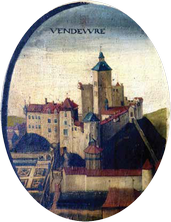
A history rooted in mediaeval times
The château de Vendeuvre is among the longest-standing in the Aube region.
The first evidence of a château in the villa of Vendeuvre dates from 962 B.C., at the end of the Carolingian reign.
It was almost certainly a ‘castle mound’, a sheltered dwelling for the first lords in the 10th century. This château, erected near the source of the Barse River, was the focus of the war for succession between the last Carolingian pretender to the throne and Hugh Capet. It was destroyed in 987 B.C.
Several counts passed on their titles to their heirs until 1221. The seigniory was subsequently taken over by Hugh, Count of Champagne and Master of Troyes. To the north of the castle mound, a powerful dungeon with a high square tower was erected during the 12th and 13th centuries, featuring an indented surrounding wall and several other towers. A large seigniorial dwelling was built to the south, and a chapel was constructed to the east. Together they formed the ‘high court’ which was accessed from the south across a drawbridge and through a gate closed by a portcullis. This space was the lord’s prerogative. The outhouses of the château, where servants and tradesmen were lodged, were constructed around the existing dovecote. This was known as the ‘low court’. The fortress was taken apart in the second half of the 17th century, in accordance with Cardinal Richelieu’s 1626 edict ordering the destruction of feudal castles.
The present-day seigniorial dwelling was reconstructed at the end of the 17th century on the lower parts of the mediaeval buildings, incorporating a tower from the original 12th-13th-century château.
Many lordly lineages have succeeded one another in the château since the 13th century. Its fiefs have on occasion been fragmented and often, for want of male heirs, passed on by marriage or sold to regal officers alongside all the benefits of the surrounding lands.
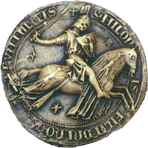
Equestrian Seal of Miles X. de NOYERS as it appears on the charter that freed the inhabitants of Vendeuvre in 1341.
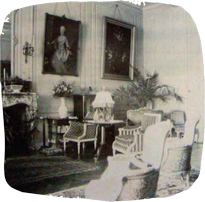
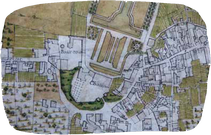
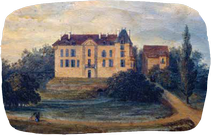
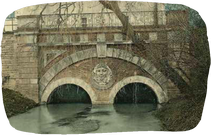
Lords who made history
Thus, prominent families succeeded one another: The VENDEUVRE, BROYES, DURNAY, NOYERS, MELLO, AMBOISE LA ROCHEFOUCAUD, LUXEMBOURG, MESGRIGNY, BOUTHILIER DE CHAVIGIER, PAVÉE DE PROVENCHÈRES DE VENDEUVRE, and the BOURLON DE SARTY.
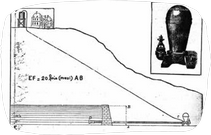
The hydraulic ram
The source of the Barse River lies at the foot of the château.
The comfort of the lords improved when Joseph-Michel MONTGOLFIER invented the ‘hydraulic ram’ in 1796. He imagined a device to force the water of the Barse River to rise up to the level of the château which can still be seen today, just off the Grande Rue.
Voici les différents panneaux du circuit patrimonial Mélusine :
Eau, Trésor et Origine
Water, Treasure and Origins
Do you know how many sources there are in Vendeuvre?
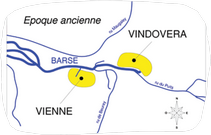
Sources at the root of the site
The rich soil and lush vegetation afforded by the Barse sources attracted people to the area very early on, providing them with an abundance of food. As a result, the early Gallo-Roman and Merovingian population waves settled in two main areas:
- in the vicinity of the Barse River source, spawning Vindovera;
- near another major water supply, the Claquot source, with the Vienna settlement cluster (the former Voies de Vienne district).
Over the years, people exploited the water to develop their activities.
Several mills (moulins in French) were built in close proximity to the Barse sources.
Oil was produced at the Moulin Cornet.
While the soil was processed to supply a large pottery factory at the Moulin de l’Houzotte. The water also helped to model the clay for the ‘Sainterie’ statues.
The Moulin du Prieuré (the Priory mill) located at the intersection of the Grande Rue and Avenue Leclerc, crushed grain until 1814 before becoming a paper mill. In 1837, Jean-Baptiste PROTTE purchased the mill to house his traction engine and thresher manufacturing plant which later produced the renowned Vendeuvre tractors.
The water was also used to tan hides at the lavoir des tanneries (tannery washhouse) and to power the iron-beating swifts at the Petites and Grandes Forges (Small and Large Forges).
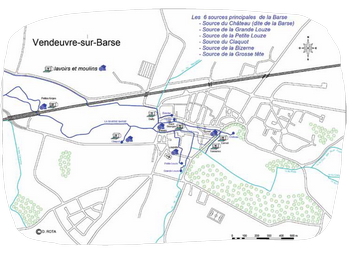
The six key Barse sources
- Source du Château (so-called Source de la Barse)
- Source de la Grande Louze
- Source de la Petite Louze
- Source du Claquot
- Source de la Bizerne
- Source de la Grosse tête
Washhouses and mills
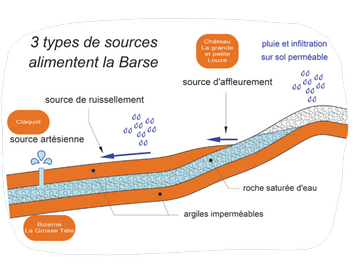
The different types of sources
3 types of sources supply the Barse
Claquot
Bizerne La Grosse Tête
Château La grande et petite Louze
artesian source
run-off source
outcrop source
impervious clays
water-saturated rock
rain and infiltration on porous soil
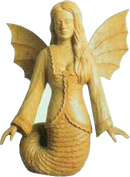
The legend of Melusine
Nicolas CHEVALIER, a notary in Vendeuvre in the 18th century, related an astonishing occurrence in his ‘Historical essay on Vandoeuvre’.
‘Renier GILLEMER, a former and elderly Templar disavowed by his brethren of the house of Troyes, a hermit residing in a clearing of the forêt d’Orient, north of Vendeuvre, in the 12th century, himself of vandal origin (a Germanic people who settled in Vendeuvre around 409 B.C.), recounts an anecdote which, while seemingly apocryphal, nonetheless merits some credit owing to its wide promotion.
According to Renier GILLEMER, the name Vandoeuvre is believed to be derived from Vandopera changed to Vandovera which is none other than the work of the Vandals. One of the very first Vandal princesses is said to have been the ruthless Melusine.
A tireless warrior, she rode the fiercest of mounts, leading her soldiers on wild expeditions, in relentless pursuit of power, domination, and devastation. Upon arriving in Vendeuvre, her troops plundered the village, slaughtered its inhabitants, and burned their houses.
On account of the many horrors that she had inflicted on the people of Vendeuvre, Melusine was turned into a fish from the waist down and forced to appear on the big tower of the Château de Vendeuvre in this dreadful state, each year, on the day of the dead (November 2nd), to beg for the end of the world through great and repeated screams.’
